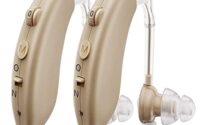Frontotemporal Dementia Market to Undergo Significant Growth until 2025
Growing incidences of frontotemporal disorders and increasing funding by governments across the globe for R&D to drive global frontotemporal dementia market
According to TechSci Research report, “Global Frontotemporal Dementia Market By Drug Class Type (Antidepressants (Fluoxetine, Fluvoxamine, Sertraline, Paroxetine, Citalopram, Bupropion, Mitrazepine), Antipsychotics (Olanzepine, Quetiapine, Ziprasidone, Aripiprazole, Risperidone, Paliperidone), By Disease Type (Behavior Variant Frontotemporal Dementia (bvFTD), Primary Progressive Aphasia (PPA), Others), By Distribution Channel (Hospital Pharmacy, Retail Pharmacy, Drug Store, Online Pharmacy, Others), By End User (Hospitals, Specialty Clinics, Others), By Region, Forecast & Opportunities, 2025”, the market is expected to witness robust growth during the forecast period as governments across the globe are increasing funding for research and development activities for treatment of various neurological diseases. Apart from that, increasing funding and grants offered by various non-profit organizations for drug development are supporting the growth of the market. Moreover, the growing number of geriatric populations who are more prone to neurodegenerative diseases are further expected to drive the growth of global frontotemporal dementia market until 2025. Additionally, increasing life expectancy rate around the globe is a major factor contributing to the growth of frontotemporal dementia market. Also, advanced care of treatment, such as mental treatment centers and home care administrations are further boosting the growth of this market. With increasing clinical trials to find the best treatment, the frontotemporal dementia market is expected to undergo rapid growth in the coming years.
However, the market might face some restraints. Poor treatment process and lack of proper diagnosis are limiting the growth of frontotemporal dementia market. Moreover, lack of awareness and high chances of misunderstanding with Alzheimer’s disease are hampering the growth of this market. High rate of clinical trials and lack of approved drugs for the treatment of frontotemporal disorder are some other factors negatively impacting the market growth.
Browse XX market data Tables and XX Figures spread through XXX Pages and an in-depth TOC on “Global Frontotemporal Dementia Market”
https://www.techsciresearch.com/report/frontotemporal-dementia-market/4841.html
The global frontotemporal dementia market is segmented based on drug class type, disease type, distribution channel, end user and region. Based on drug class type, the market is segmented into antidepressants and antipsychotics. Among them, the antidepressant segment is expected to undergo fastest growth until 2025 as they are being extensively used to minimize the behavioral problems associated with frontotemporal dementia. Further, physicians are also recommending antidepressants to manage the health of the patient. Based on disease type, the global frontotemporal dementia market is categorized into Behavior Variant Frontotemporal Dementia (bvFTD), Primary Progressive Aphasia (PPA) and others. Here, the Behavior Variant Frontotemporal Dementia segment is expected to grow substantially during the forecast period owing to its rising prevalence. The symptoms of behavior variant frontotemporal dementia include behavioral changes, apathy and changes in stereotypic behavior.
Major players operating in the global frontotemporal dementia market include Pfizer Inc., Novartis AG, F. Hoffmann-La Roche Ltd., AstraZeneca GmbH, Sanofi S.A, Merck & Co., Inc., auRX Therapeutics, Alector Pharma Co., Valeant Pharmaceutical International, GlaxoSmithKline Plc., Allergen plc, Eli Lilly and Company, Johnson & Johnson and Mylan N.V. The companies are focusing on adopting latest technologies in drug manufacturing and to offer drugs with reduced side effects. The market is largely fragmented and is witnessing the entry of new manufacturers.
Download Sample Report @ https://www.techsciresearch.com/sample-report.aspx?cid=4841
Customers can also request for 10% free customization on this report.
“Regionally, North America accounts for largest market share in frontotemporal dementia owing to the availability of advanced healthcare facilities and rising awareness towards dementia. Additionally, favourable government policies in countries such as United States and Canada are further boosting the growth of this market. However, regions such as Europe and Asia-Pacific are also emerging as a growing market for frontotemporal dementia owing to rising geriatric population in the two regions,” said Mr. Karan Chechi, Research Director with TechSci Research, a research based global management consulting firm.
“Global Frontotemporal Dementia Market By Drug Class Type (Antidepressants (Fluoxetine, Fluvoxamine, Sertraline, Paroxetine, Citalopram, Bupropion, Mitrazepine), Antipsychotics (Olanzepine, Quetiapine, Ziprasidone, Aripiprazole, Risperidone, Paliperidone), By Disease Type (Behavior Variant Frontotemporal Dementia (bvFTD), Primary Progressive Aphasia (PPA), Others), By Distribution Channel (Hospital Pharmacy, Retail Pharmacy, Drug Store, Online Pharmacy, Others), By End User (Hospitals, Specialty Clinics, Others), By Region, Forecast & Opportunities, 2025”has evaluated the future growth potential of global frontotemporal dementia market and provides statistics & information on market size, structure and future market growth. The report intends to provide cutting-edge market intelligence and help decision makers take sound investment decisions. Besides, the report also identifies and analyzes the emerging trends along with essential drivers, challenges and opportunities in global frontotemporal dementia market.
Contact
Mr. Ken Mathews
708 Third Avenue,
Manhattan, NY,
New York – 10017
Tel: +1-646-360-1656
Email: sales@techsciresearch.com



